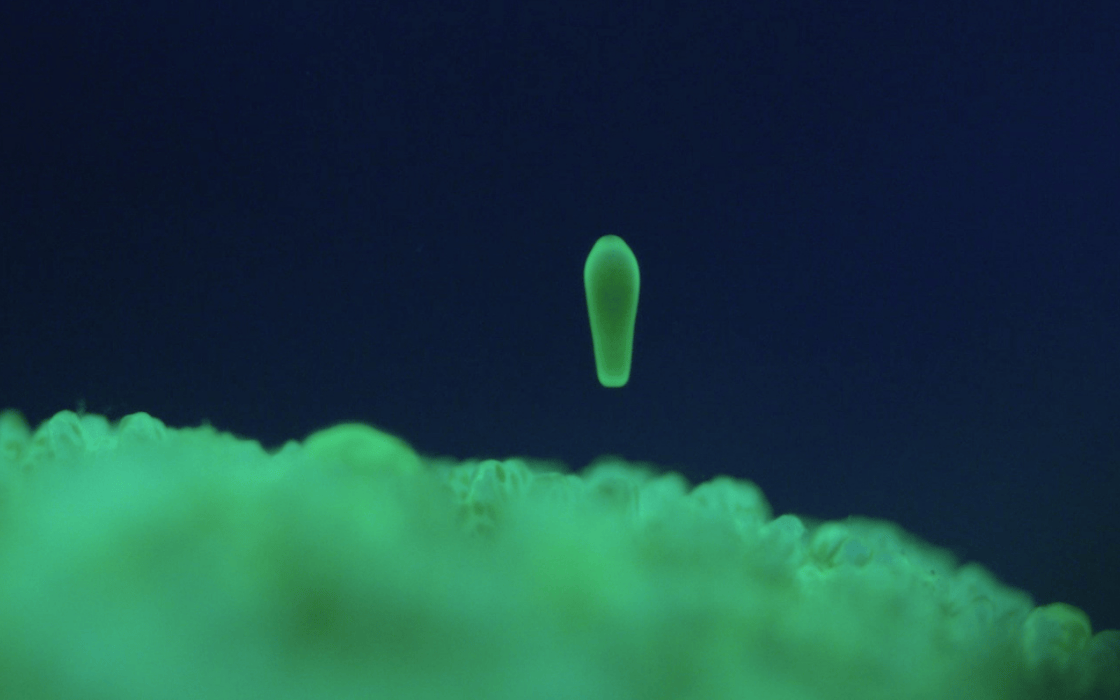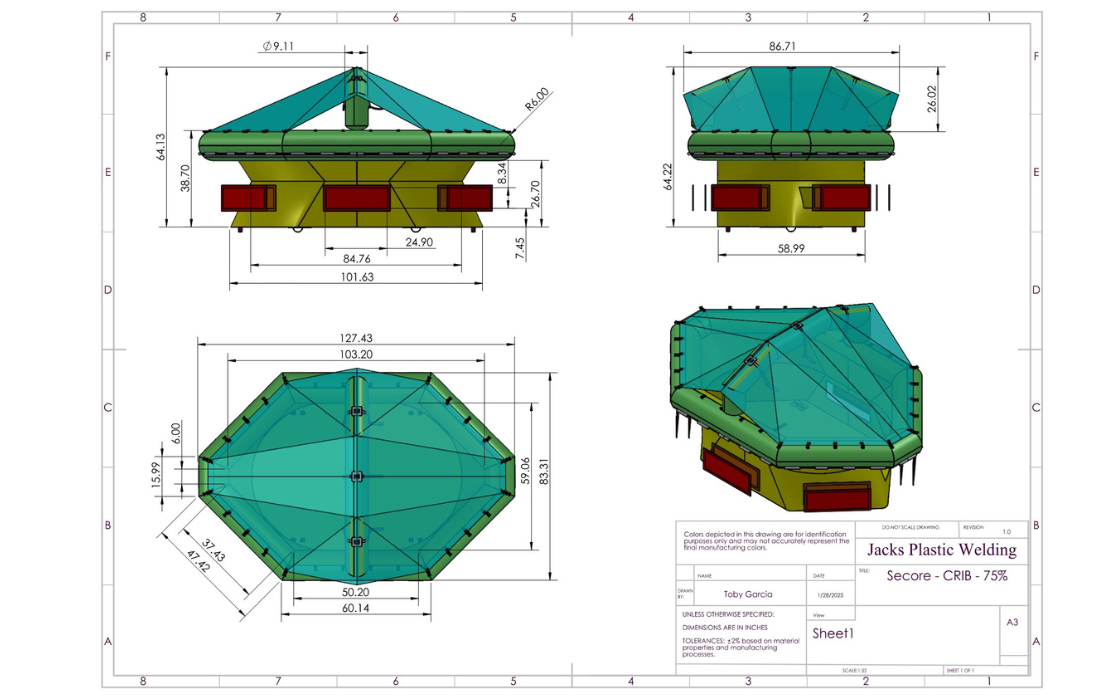A Floating Coral Nursery–Rearing Corals for Restoration
Published at: August 28th, 2025 by MarySECORE's CRIB is one of the tools within the SECORE toolbox designed to make coral restoration more accessible and efficient. This floating coral nursery simplifies coral rearing by removing the need for land-based facilities.
When we think of saving coral reefs, we often picture massive projects requiring huge labs. These projects are crucial but what if they aren't the only way? What if there were simple tools that could make a big impact and broaden accessibility to coral conservation? That's the idea behind the Coral Rearing In-Situ Basin, or CRIB—a floating coral nursery developed by SECORE to help restore coral reefs around the world in an accessible and affordable way.
This blue device floats right in the ocean and provides a suitable environment for baby corals to settle and grow. The CRIB makes coral restoration more efficient and accessible by replacing the need for land-based facilities, as well as requiring less personnel or specialized training to operate. Overall resulting in more efficient, cost effective and successful conservation efforts that maximize our worldwide impact.
Coral Rearing Simplified
The lifecycle of corals begins at the fertilization of sperm and egg at the surface of the ocean. From here, coral larvae develop. In the ocean, the coral larvae will eventually swim down looking for a surface to settle on and make their forever homes. The larvae’s senses, such as hearing and smell, actually help them find the right place. Once settled, the larvae develop into the first coral polyp. To boost the rates of successful reproduction, SECORE offers tools and techniques that work alongside this natural lifecycle. In the case of coral settlement, it’s the CRIB!

Construction and Deployment
Where possible, the CRIB is deployed by the shoreline to ensure easy and quick access and filled with Seeding Units (i.e. substrates the coral larvae can settle onto). The coral embryos are often transferred to the CRIB immediately after fertilization. The CRIB offers a safe space and our substrates the ideal surface for the larvae to swim down and settle – a canopy protects them from too much UV rays and flooding of fresh rainfall. The CRIB’s walls have mesh windows to allow water exchange while simultaneously preventing sealife from disrupting or eating the precious coral offspring. Once the coral larvae have settled, mesh windows in the CRIB or even the entire bottom of the CRIB can be removed. This enables the corals to better adapt to their future environment–the reef–by guaranteeing that the baby corals will have fresh water flow and access to their planktonic food source.
To maximize the amount of available food, we have been experimenting with solar powered light. A single light that automatically activates at night and draws plankton toward the CRIB, naturally maximizing the corals' food supply without adding complexity.
Typically after a few weeks of being left to settle, eat and grow, the Seeding Units with the settled coral babies can be removed from the CRIB and outplanted onto the reef. After that, the CRIB is brought on land and cleaned, getting it ready to be used for rearing the next coral species.
 Paul A. Selvaggio
Paul A. Selvaggio
Simplicity is Key
Rearing corals in a lab setting requires spacious facilities and manpower to perform continuous water replacements and filtering, daily feeding and upkeep of the tanks and overall facilities, all required to ensure a healthy environment for the coral larvae to thrive. Not all coral restoration practitioners have land-based facilities to handle these steps. We want to make restoration accessible to as many people as possible, especially when resources are limited, such as manpower or available facilities. That’s why we developed the CRIB. Our goal was to create a self-sufficient, highly mobile tool that offers a safe space to successfully breed and raise corals.

Expanding our Toolbox
Some of our implementation partners have different needs and geographical conditions. As a result, in addition to our standard model which can hold roughly 1000 Seeding Units, we have created 3 additional prototype models. The 75% version, the 50% and the short model. The 75% and 50% are simply smaller versions of our standard model. The short version has a shorter bed, meaning the height from the surface of the water down to the bottom of the CRIB is shorter than the standard. This is especially handy for shallow lagoon areas or bays.
 Paul A Selvaggio
Paul A Selvaggio
SECORE’s CRIB is just one of many of our technologies that make coral restoration more efficient and accessible. Thanks to feedback and piloting by our implementation partners, and of course the continuous support by our funders, we can continuously improve and expand our toolbox. In this way, we help to reduce costs and increase the efficiency and effectiveness of coral restoration efforts worldwide. By working together, we can offer coral reefs a fighting chance for the future. Curious what else we’ve been working on? Follow us on Instagram, LinkedIn or Facebook or even sign-up for our newsletter!
This form is protected by reCAPTCHA and the Google Privacy Policy and Terms of Service apply.
